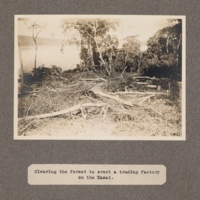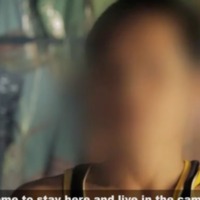
Saw Pol Lu
The UN has estimated that the number of refugees, asylum seekers and internally displaced people around the world has topped 65 million. Many of these people live in refugee camps across the globe. In Myanmar (Burma), thousands of people have fled civil war and found themselves confined to refugee camps in Thailand where they are vulnerable to human trafficking. In an attempt to provide for their families, refugees are lured for employment in Thailand and Malaysia then sold to employers as forced labourers. Saw Pol Lu fled Myanmar (Burma) to escape the civil wars and now lives in Mae La refugee camp along the Thai boarder. Here the widespread corruption and failed Thai policy led Saw Pol Lu, along with thousands of other refugees, in to the hands of human traffickers. Saw Pol Lu tells of the conditions and dangers faced by Burmese refugees in Thailand.

Ronny (Narrative 2)
There are an estimated 57,700 people in modern slavery in the US according to GSI estimates. The US attracts migrants and refugees who are particularly at risk of vulnerability to human trafficking. Trafficking victims often responding to fraudulent offers of employment in the US migrate willingly and are subsequently subjected to conditions of involuntary servitude in industries such as forced labour and commercial sexual exploitation. Ronny was offered a job in the US working in hotels, however once he arrived the job he was to undertake was very different from what he had been promised. Ronny along with two other people was forced to live in a cramped one-bedroom apartment, paid only $39 a week for his labour. In this narrative Ronny talks about the importance of survivor support services to rehabilitation.

Zakir
India has a population of more than 1.3 billion people, there are still at least 270 million people living on less than US$1.90 per day. While laws, systems and attitudes regarding key 'fault lines' such as the caste system, gender and feudalism are rapidly changing, social change of this depth and scale necessarily takes time. In this context, it is perhaps unsurprising that existing research suggests that all forms of modern slavery continue to exist in India, including intergenerational bonded labour, forced child labour, commercial sexual exploitation, forced begging, forced recruitment into non-state armed groups and forced marriage. Zakir travelled to his aunt’s house in Mumbai where he was told he would get an education. However upon arrival he was forced to work in the zari factory next door. Subjected to physical and verbal abuse daily, Zakir received no money for his work. Eventually Zakir was rescued by an anti-trafficking organisation and went back to school.

Min Aung
Men, women and children are victims of human trafficking for forced labour in the Thai fishing industry. Enslaved people are subjected to physical abuse, excessive and inhumane working hours, sleep and food deprivation, forced use of methamphetamines and long trips at sea confined to the vessel. People are also often exploited in sea-food pre-processing facilities, with reports of men, women and children working excessive hours in oppressive and abusive conditions. Though the Thai Government have reportedly accelerated efforts to combat labour exploitation, most workers in the Thai fishing sectors remain unregistered. Min Aung was enslaved in a shrimp factory along with his pregnant wife where they were subjected to long working hours under the constant threat of violence. Min Aung worked at the factory for two years before he was able to leave.

Ronny
In the US, slavery occurs in both legal and illicit industries, including in commercial sex, hospitality, traveling sales crews, agriculture, seafood, manufacturing, janitorial services, construction, restaurants, health care, care for persons with disabilities, salon services, fairs and carnivals, peddling and begging, drug smuggling and distribution, and child care and domestic work. Individuals who entered the United States with and without legal status have been identified as trafficking victims. Government officials, companies, and NGOs have expressed concern about the risk of human trafficking and slavery in global supply chains, including in federal contracts. Victims originate from almost every region of the world.
Ronny’s account mentions some common features of this kind of slavery: a false promise of a lucrative job, withheld wages, debt bondage that is made difficult or impossible to pay off, and threats against the worker and their family. Ronny has become an advocate for survivors of slavery in the United States.
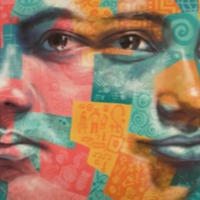
Jonas
According to the 2016 Global Slavery Index, there are more than 11,000 slaves living in Lithuania. Observers estimate 40 percent of identified Lithuanian victims of modern slavery are women and girls subjected to sexual exploitation within the country. Lithuanian women are also subjected to sex trafficking in Western Europe and Scandinavia. Lithuanian children and adults are increasingly forced to engage in criminal activities, such as shoplifting and drug selling, in Nordic countries and Western Europe. Lithuanian men are subjected to forced labor, including in agriculture, in Ireland, the United Kingdom, and the United States. Jonas was one of these men who left in the hope of well-paid work but found instead a situation of exploitation and violence. He was able to leave the situation due to work carried out by the Gangmasters Licensing Authority.
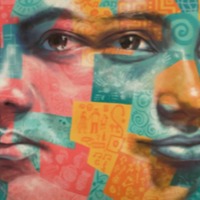
Goma
Goma was enslaved in her home country of Nepal as a teenager, after running away with friends to Kathmandu, the capital of Nepal. She was made to weave carpet without pay and beaten when she asked for the money she earned. According to the Global Slavery Index, within Nepal, forced labour and debt bondage persist, particularly within the agriculture, forestry, construction, and manufacturing sectors. Many Nepalese are trapped into exploitative situations by borrowing money from lenders, who then force borrowers to work to repay their debt. As in Goma’s case, those in debt bondage do not have the freedom to work for another employer without the landlord’s permission, and are subjected to working long hours for wages below the minimum wage. Individuals who eventually pay off their debt are at risk of falling back into modern slavery, due to limited alternative job opportunities. Studies also indicate that forced marriage and the marriage of those under 15 years old continues.
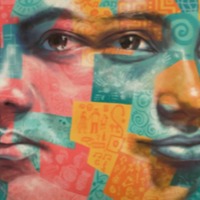
Emee
Emee and her brother were taken from her rural community with false promises of work for good money but then enslaved in Manilla. Emee was enslaved within the Philippines but an estimated 10 million Filipinos migrate abroad for work, and many are subjected to human trafficking, commercial sexual exploitation and forced labour throughout Asia, Europe, North America and the Middle East.
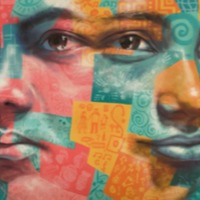
Farida
Born in Armenia, Farida was trafficked to Turkey, where victims also arrive from Ukraine and Moldova. As well as Turkey and the UAE, Armenian women and girls are trafficked for sexual exploitation to Russia, Greece, and other European countries. In this narrative, Farida discusses the pressures that led to her seeking out work in another country, and also reveals that fear of the immigration police in Turkey made it harder for her to leave her situation. Like many others who return to their home country after being trafficked abroad, Farida notes that her circumstances are still as precarious as before she left.

Chimpanzee at Cabenda, on Messrs. Hatton and Cookson's factory
